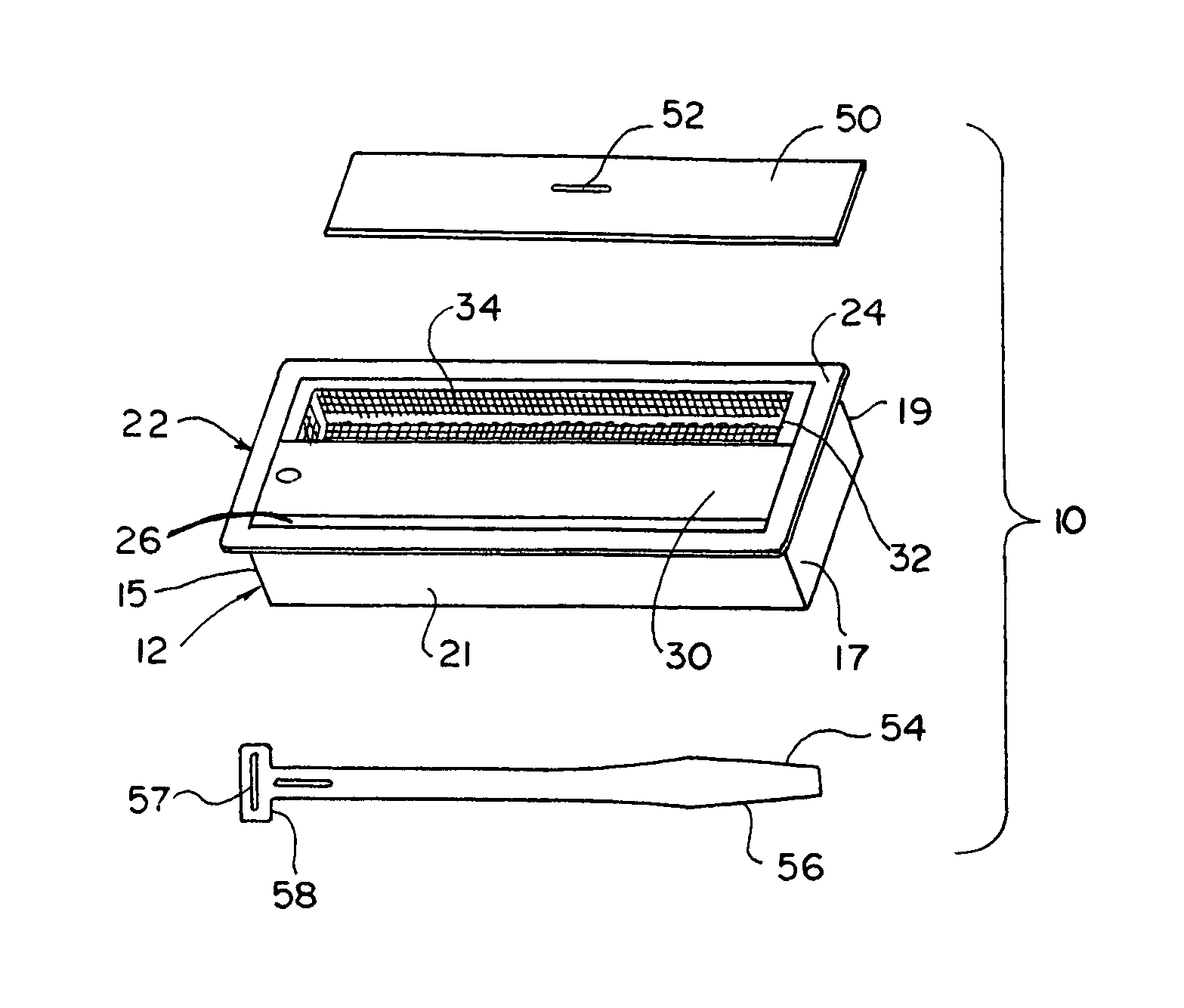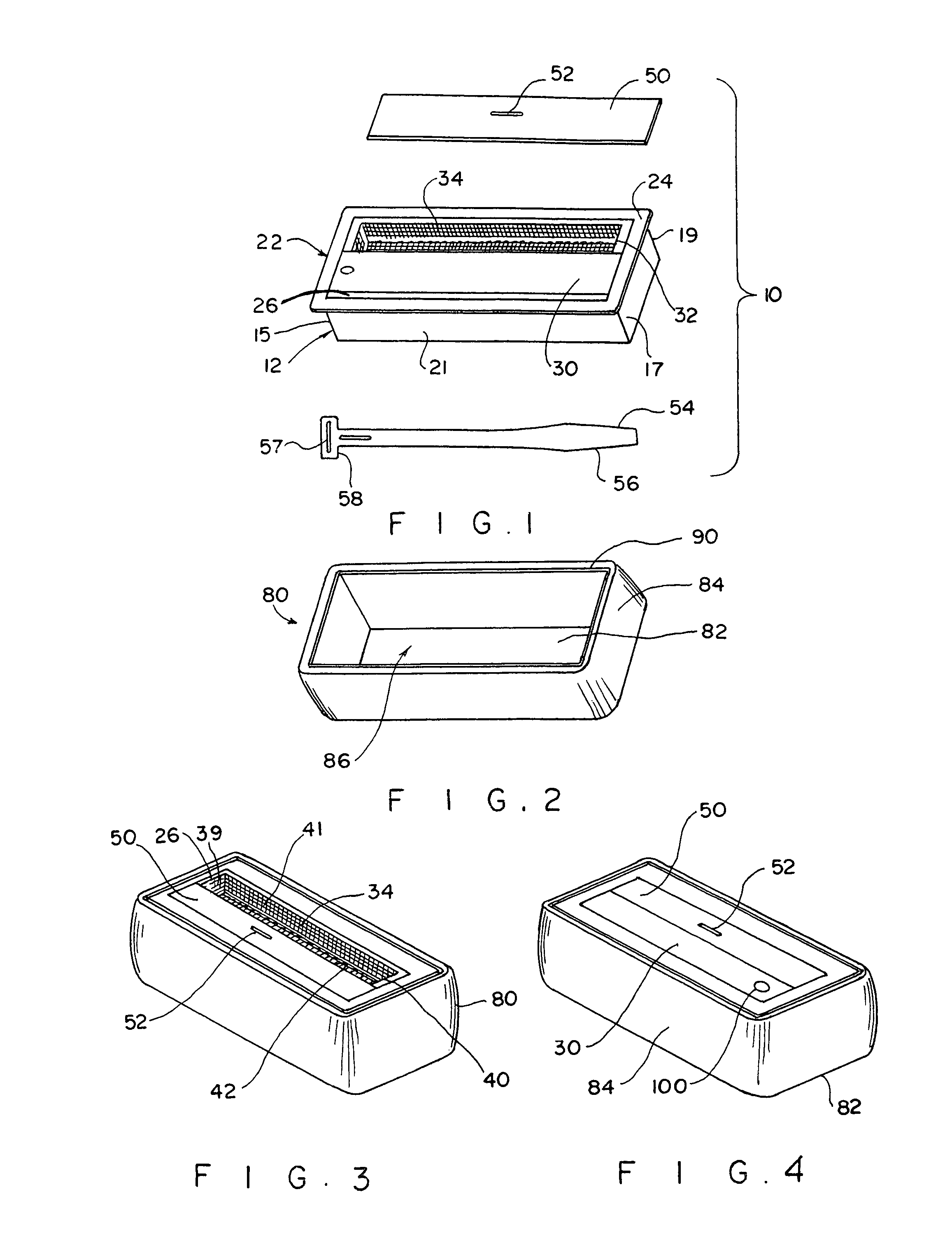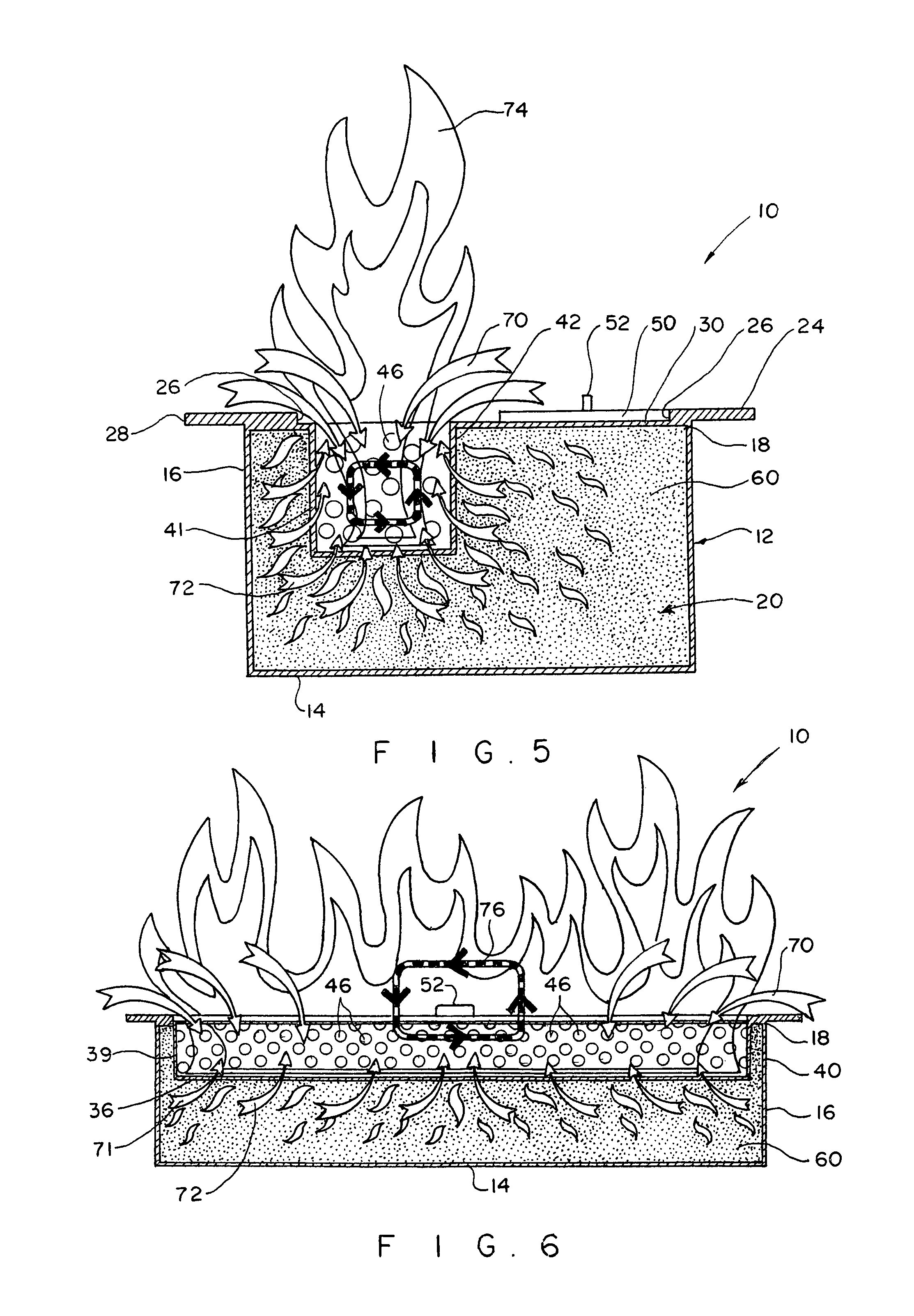Spill proof alcohol burner
a technology of alcohol burner and burner head, which is applied in the direction of domestic stoves or ranges, combustion types, lighting and heating apparatus, etc. it can solve the problems of unfavorable fuel exhaustion, unfavorable fuel exhaustion, and inability/practicality of venting/chimneys in all types of dwellings, so as to facilitate the effect of spill-proof aspect and improved safety characteristics
- Summary
- Abstract
- Description
- Claims
- Application Information
AI Technical Summary
Benefits of technology
Problems solved by technology
Method used
Image
Examples
Embodiment Construction
[0034]Turning now to the drawings in more detail, numeral 10 designates the alcohol burner assembly according to this invention. The assembly 10 comprises a portable hollow housing 12 having a closed bottom 14, a continuous upright sidewall 16, and a peripheral top edge 18. The housing illustrated in the drawings has a generally rectangular configuration although other configurations can be used if desired. When the rectangular configuration is contemplated, the sidewall comprises housing end walls 15, 17 and housing side walls 19, 21. The bottom 14, the housing end walls 15, 17 and the housing side walls 19, 21 define an interior fuel chamber 20.
[0035]A top plate 22 is secured to a top edge 18 of the housing sidewalls 19, 21 and the housing end walls 15, 17, covering the top of the housing 12. The top plate 22 is affixed by welding to a peripheral flange 24, which is dimensioned to be at least slightly greater than the dimensions of the housing sidewall 16. The top plate 22 is conf...
PUM
 Login to View More
Login to View More Abstract
Description
Claims
Application Information
 Login to View More
Login to View More - R&D
- Intellectual Property
- Life Sciences
- Materials
- Tech Scout
- Unparalleled Data Quality
- Higher Quality Content
- 60% Fewer Hallucinations
Browse by: Latest US Patents, China's latest patents, Technical Efficacy Thesaurus, Application Domain, Technology Topic, Popular Technical Reports.
© 2025 PatSnap. All rights reserved.Legal|Privacy policy|Modern Slavery Act Transparency Statement|Sitemap|About US| Contact US: help@patsnap.com



